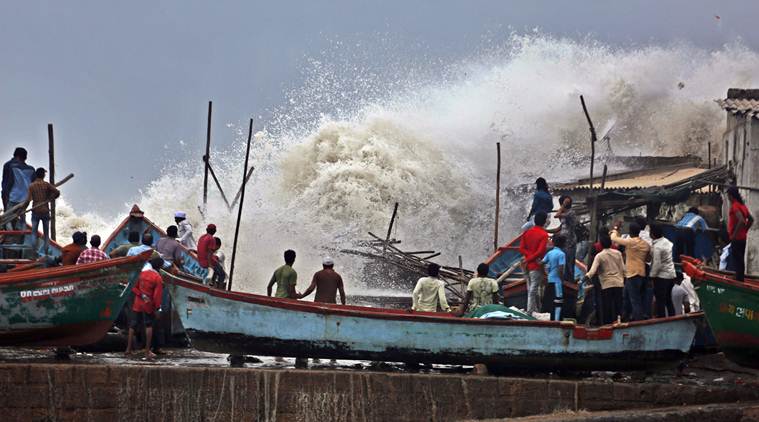This is a section for real-time weather updates and forecasts pertaining to cities across India and the globe. Everything under the sun, ranging from commitments to the accuracy of reports, punctuality in provisioning of information, and also insights into changing weather patterns, extreme climate events, and seasonal updates for keeping people alert and informed. Daily, weekly, and long-term forecasts. With this, data from reputed sources is going to include the India Meteorological Department (IMD), several global climate agencies, and satellite imagery. Monsoon tracking, heatwave alerts, cyclone warnings, and snowfall predictions would be fruits of this collaboration, with the information put in an understandable way before the consumers of this service. Apart from prediction once in a while, there are also discussions on climate changes, air quality updates, and other environmental issues that affect several regions. AQI reports, pollution trends, and experts' views on pro or anti-climate change policies can be provided to cater to discerning readers who can make their own decisions regarding health matters and safety. Strongly base for credible, live, and certainly relevant, covering weather on the pages of IndianExpress.com about readers being at the forefront of unpredictable weather changes and much more about the wider environment concerning trends in global climate.
Arabian Sea saw second most frequent and intense cyclones since 1902 : IMD
In a weather summary titled the 'Statement on Climate of India during 2019', IMD stated rains and floods alone took lives of 849 people, with Bihar being the worst affected Indian state.
 A waves crashes as people stand on boats on the Arabian Sea coast in Veraval, Gujarat, India. (AP Photo/Ajit Solanki, File)
A waves crashes as people stand on boats on the Arabian Sea coast in Veraval, Gujarat, India. (AP Photo/Ajit Solanki, File)
2019 was a year of extremes – heat, cold, rain, and cyclones for India, killing a total of 1,562 people, the India Meteorological Department (IMD) stated in a report on Monday. Last year, the total number of deaths caused due to similar weather vagaries was 1,428.
In a weather summary titled the ‘Statement on Climate of India during 2019’, IMD stated rains and floods alone took lives of 849 people, with Bihar being the worst affected Indian state. Death tolls, as per IMD records, was 1,592 in 2017 and 1,538 in 2016.
Interestingly, the rainfall amounts during both the southwest monsoon (June to September) and northeast monsoon (October to December) remained 109 per cent of the Long Period Average (LPA). That is, the country recorded excess rainfall during the entire year, making it an extremely wet year in recent times, when both monsoons reported above normal rain for the seasons.
Killer extreme weather of 2019 |
|
| Cause | Number of deaths |
| Heavy rain, floods | 849 |
| Heatwave | 349 |
| Thunderstorm | 210 |
| Lightning | 75 |
| Snow avalanche | 51 |
| Coldwave | 28 |
| Total | 1,562 |
The mean temperatures remained 0.36 degrees above normal, making 2019 the seventh hottest year ever recorded, the report said. The decade 2011 – 2019 remained the warmest on record for the country, when the annual mean temperature remained 0.36 degree above normal. The report highlighted that India had warmed by 1 degree Celsius since 1901. Whereas, the rise in minimum temperature was 0.22 degrees in the century.
While extremely heavy rain and hot days are becoming more frequent in recent years, 2019 was exceptional also for the number of cyclones that swerved India’s east and west coasts, IMD said.
Notably, an active Arabian Sea brewed more cyclonic storms than the Bay of Bengal during the year gone by. It was only for the second time in 117 years that the Arabian Sea saw such intense and frequent cyclones. Previously, similar cyclonic activity was reported in the Indian Ocean only during 1893, 1926, 1930, and 1976. During these years, cyclones formed both in the Arabian Sea and the Bay of Bengal put together numbered to ten in a calendar year.
In 2019, eight cyclonic storms formed over the north Indian Ocean, IMD officials said. Of these, five — Cyclones Vayu, Hikka, Kyarr, Maha and Pavan originated in the Arabia Sea, which is normally calmer, not seeing more than one cyclone in a year. On the contrary, the Bay of Bengal last year reported lesser than normal number of cyclones. The four cyclones formed here were — Cyclones Pabuk, Fani, Bulbul. Meteorologists said that the Bay of Bengal sees an average of five cyclones each year, making 2019 a year when the Arabian Sea dominated.
The winter of 2018-2019 was one of the coldest in the northern hemisphere when the snowstorms penetrated into the Indian sub-continent throughout the winter months. Jammu and Kashmir, Ladakh reported 51 deaths triggered by snow avalanche, last year.
The state-wise death toll caused due to various extreme weather events read as — Maharashtra (231), Jharkhand (138), Uttar Pradesh (135), Rajasthan ( 94), Kerala ( 86), Odhisha (64), Jammu and Kasmir, Ladakh ( 51), Karnataka (43), Himachal Pradesh (27) and Madhya Pradesh (24) last year.








- 01
- 02
- 03
- 04
- 05























